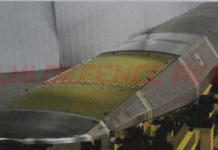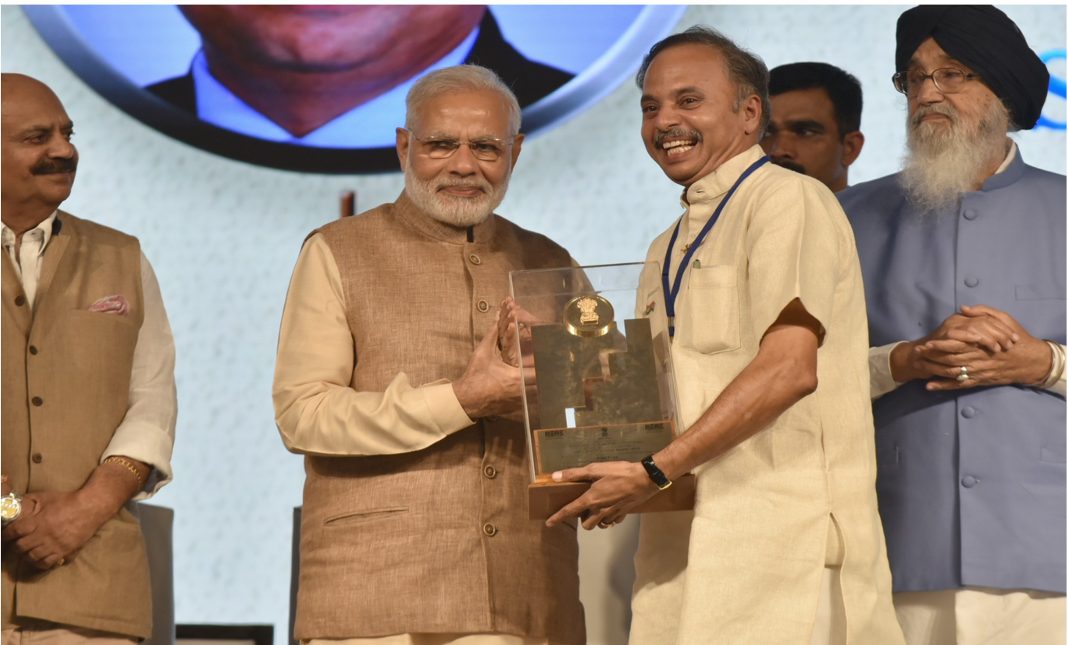‘It was former Indian President, APJ Abdul Kalam who inspired me to embark on this journey’, says R. Sundaram, Managing Director of Aerospace Engineers Pvt Ltd (AEPL) located in Salem, Tamil, Nadu, India. ‘Today we are a premier supplier of cockpit canopy seals (CCSs) for the entire range of aircraft in the Indian military’s machine pool’, he adds. Indeed, AEPL’s journey from being a supplier of gaskets to power equipment makers in the late 1980s to coming in first in the 2014 National Award for Innovation given by India’s Ministry for Micro, Small and Medium Enterprises (MSMEs) (the prize was handed over last year by Prime Minister Narendra Modi), is certainly noteworthy. It exemplifies the opportunities that are there for Indian MSMEs possessing credible capability to fashion polymers or metals, with respect to the indigenization of myriad imported line replacement units (LRUs) currently being used in domestically operated aerospace & defence (A&D) platforms. Furthermore, it shows that with in-house innovation and an adherence to standards, success need not be limited to the domestic market only. AEPL today is not just a supplier to various flagship indigenous programmes, but is also a vendor to global original equipment makers (OEMs) and is even looking at inorganic expansion via overseas acquisition.
Beginnings
AEPL’s first significant A&D product was a 6.8 metre (m) long CCS for the Indian Air force’s (IAF’s) HJT-16 trainer aircraft built by Hindustan Aeronautics Limited (HAL). At the prodding of Dr Abdul Kalam, whom Sundaram had met at a seminar in 1992, AEPL began work on developing an indigenous alternative to the HJT-16’s then Dunlop made, imported CCS. By 1996, AEPL’s CCS was cleared for flight testing by the Center for Military Airworthiness & Certification (CEMILAC). The testing was undertaken at the IAF’s Aircraft & Systems Testing Establishment (ASTE), Bengaluru at a time when Wing Commander (retd) Rakesh Sharma, the first Indian to ever travel to space, was HAL’s Chief Test Pilot. ‘He was incredibly supportive’, says Sundaram. What is more, it turns out he was fluent in Tamil. Perhaps, a shared idiom helped along the cause of indigenization.
Sundaram’s product certainly seems to have spoken for itself though. As opposed to a requirement of maintaining a cabin pressure differential of 1.6 psi at 30,000 feet for a duration of 16 seconds, AEPL’s CCS managed to do it for 64 seconds. It was cheaper too, by some 30 percent as compared to Dunlop’s seal. Today, AEPL supplies a very large number of CCSs to IAF and other customers every year. Of course, AEPL’s polymer product range is not limited to CCSs. As India’s first rubber company to get AS9100C qualification, AEPL supplies a range of rubber and elastomeric components, including items such as O rings, conductive bellows, rotary oil seals, piston seals, various compression mouldings, extrusions, silicon rubber mandrels, PTFE parts for aircraft interiors etc. AEPL also produces metal to rubber bonded components and other elastomer bonded items. Of late, it has ventured into mouldings for fin stabilized armour piercing discarding sabot rounds used by tank guns, grouser pads used in tank treads and rubber linings for missile rocket motors. Significantly, a majority of AEPL’s products are of in-house design and the company does have some international patents to its credit. In all, AEPL says that it can work with 115 different types of polymers for meeting customer requirements.
Not just polymers
Beyond polymers, AEPL has significant capability in metallic products as well. For instance, the company is currently supplying improved lubricant oil pumps (LOPs) for the Hindustan Aeronautics Limited (HAL) Dhruv advanced light helicopter (ALH). ‘We have supplied sixty units thus far’, says Sundaram. ‘Our product, developed with consultancy support from IIT Chennai is lighter than the current imported LOP by 1.4 kg, is of dual-pore design, and is more durable since we have used G-rotors instead of the usual gears’, beams Sundaram. ‘This product has resulted in foreign exchange savings of nearly $3 million’, he further adds. Earlier, HAL was importing LOPs for the Dhruv program from Thyssen-Krupp. AEPL has been contracted to supply 159 LOPs as of now.
In all, AEPL says that it produces over 1200 types of metallic components for various A&D programs of the Indian defence industry. Besides various end fittings, AEPL is now also supplying metallic sub-assemblies and LRUs such as convergent divergent assemblies used in rocket engine nozzles, jet vanes for missiles, hose assemblies and a range of pumps. ‘We also supply hydraulic sets for the Indian Space Research Organization’s (ISRO) reusable launch vehicle-technology demonstrator (RLV-TD) program’, Sundaram says to buttress the point that AEPL is not a mere polymer company. He points to a letter from ISRO, which while informing AEPL of the successful qualification of the ‘High pressure aerospace quality stainless steel wire braided smooth bore Teflon inner core hydraulic hoses (dash 6 size) with swaged stainless steel end fittings’, for use in the hydraulic actuation system of ‘RLV-TD HEX-01 mission’, thanks the company for its timely delivery of the same. AEPL is likely to supply 33 sets for ISRO’s RLV program, in addition to supplying isolators and shock absorbers for ISRO’s other satellite LV launches.
Overseas
Having cut its teeth with domestic programs, AEPL has also emerged as a supplier to global OEMs such as UTC Aerospace Systems, Rolls Royce, Boeing, Honeywell etc. Sundaram maintains that ‘AEPL not only competes on price but on quality standards as well, as is the case in the A&D industry’. He points out that major global OEMs have their own standards which are rather stringent, with a multi-stage vetting process. But he believes that AEPL has been up to the task and proudly points to the several awards for technology absorption and innovation received by his company over the years, including of course the Union MSME Ministry award mentioned above.
The company certainly seems to be betting majorly on future growth. It currently has two factory units, one in Salem and the other in Hosur spread over 6000 square m (sqm) with another 13,000 sqm under construction. AEPL’s facilities have been built to EMS 14001 environmental management standard and OHSAS 18001 standard for occupation health and safety. AEPL has actually acquired over 50,000 sqm of land and Sundaram has dubbed AEPL’s Salem acreage as the ‘Salem Aero Park’, indicating his ambitions for expansion.
While AEPL seems set to bid for various LRU indigenization programs such as the one for the HAL Tejas Light Combat Aircraft, it is also looking to acquire a firm in the United States (US), that will allow it to gain a toe-hold in that market. ‘We are likely to buy a firm in the US with our own internal accruals’, says Sundaram. It seems the idea is to extend AEPL’s reach in global markets while having the products built in its factories in India. Now, that is certainly one of the ways in which ‘Make in India’ can be taken forward.
Feature Image: Indian Prime Minister, Narendra Modi, handing the MSME National Award for 2014 to R. Sundaram, Managing Director, Aerospace Engineers Pvt Ltd on 18 October, 2016 Courtesy: AEPL
© Delhi Defence Review. Reproducing this content in full without permission is prohibited.
































